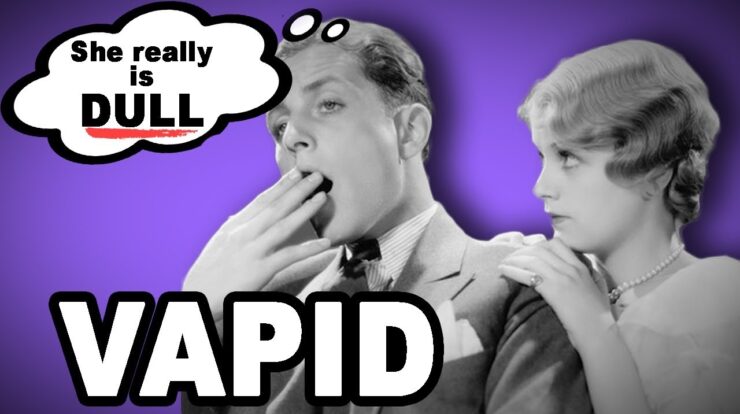
Delving into the vapid definition, we uncover a realm of shallowness and emptiness that permeates various aspects of our lives. From vapid language to vapid content, this exploration unveils the detrimental impact of vapidity on our intellectual landscape.
Vapid language lacks substance, originality, and depth, often resorting to clichés and superficiality. It manifests in various media, including literature, film, and social media, leaving audiences intellectually unfulfilled and potentially vulnerable to misinformation.
Definition of Vapid

Vapid refers to something lacking substance, originality, or depth. Etymologically, it stems from the Latin word “vapidus,” meaning “flat” or “tasteless.” Vapid content often conveys a sense of emptiness or banality.
Characteristics of Vapid Language and Content

Vapid language is often characterized by clichés, empty phrases, and a lack of specificity or detail. It may be repetitive, predictable, and devoid of any genuine insight or originality.
Examples of vapid content include shallow or uninspired writing, bland and formulaic films, or social media posts that focus on superficiality or self-promotion.
Causes and Consequences of Vapidity
Vapidity can arise from cultural influences that prioritize superficiality over substance, lack of inspiration or creativity, or a desire to appeal to the lowest common denominator.
Consequences of vapidity include intellectual stagnation, diminished creativity, and the spread of misinformation or shallow ideas.
To avoid vapidity, individuals can prioritize depth and originality in their communication, seek inspiration from diverse sources, and be mindful of the impact of their words and actions.
Vapidity in Literature
Vapid characters or situations in literature often serve as objects of satire or social commentary. They may represent the emptiness or superficiality of certain societal norms or values.
For example, in Jane Austen’s “Pride and Prejudice,” the character of Mr. Collins embodies vapidity through his pompous and repetitive speech.
Vapidity in Film and Media
Vapid content in film and media can appeal to audiences seeking escapism or mindless entertainment. It may prioritize spectacle, formulaic plots, and predictable characters over depth or originality.
Ethical concerns arise when vapid content dominates media, as it can contribute to intellectual complacency and a lack of critical thinking.
Vapidity in Social Media, Vapid definition
Vapidity on social media manifests in posts that emphasize self-promotion, superficiality, and a desire for validation.
This can affect online interactions by creating a culture of comparison and promoting a narrow or distorted view of reality.
Strategies for navigating vapid content on social media include setting boundaries, unfollowing accounts that promote superficiality, and engaging with content that stimulates critical thinking.
Last Recap: Vapid Definition
In conclusion, vapidity poses a significant threat to our cognitive development and societal discourse. By understanding its definition, characteristics, and consequences, we can strive to avoid or overcome its insidious influence, fostering a culture of depth, authenticity, and intellectual rigor.
FAQs
What is the root of the word “vapid”?
The word “vapid” originates from the Latin word “vapidus,” meaning “tasteless” or “flat.”
What are the common characteristics of vapid content?
Vapid content is often characterized by a lack of substance, originality, and depth. It may rely heavily on clichés and superficiality.
What are the potential consequences of vapidity?
Vapidity can lead to intellectual stagnation, diminished creativity, and the spread of misinformation. It can also hinder meaningful communication and foster a culture of shallowness.





